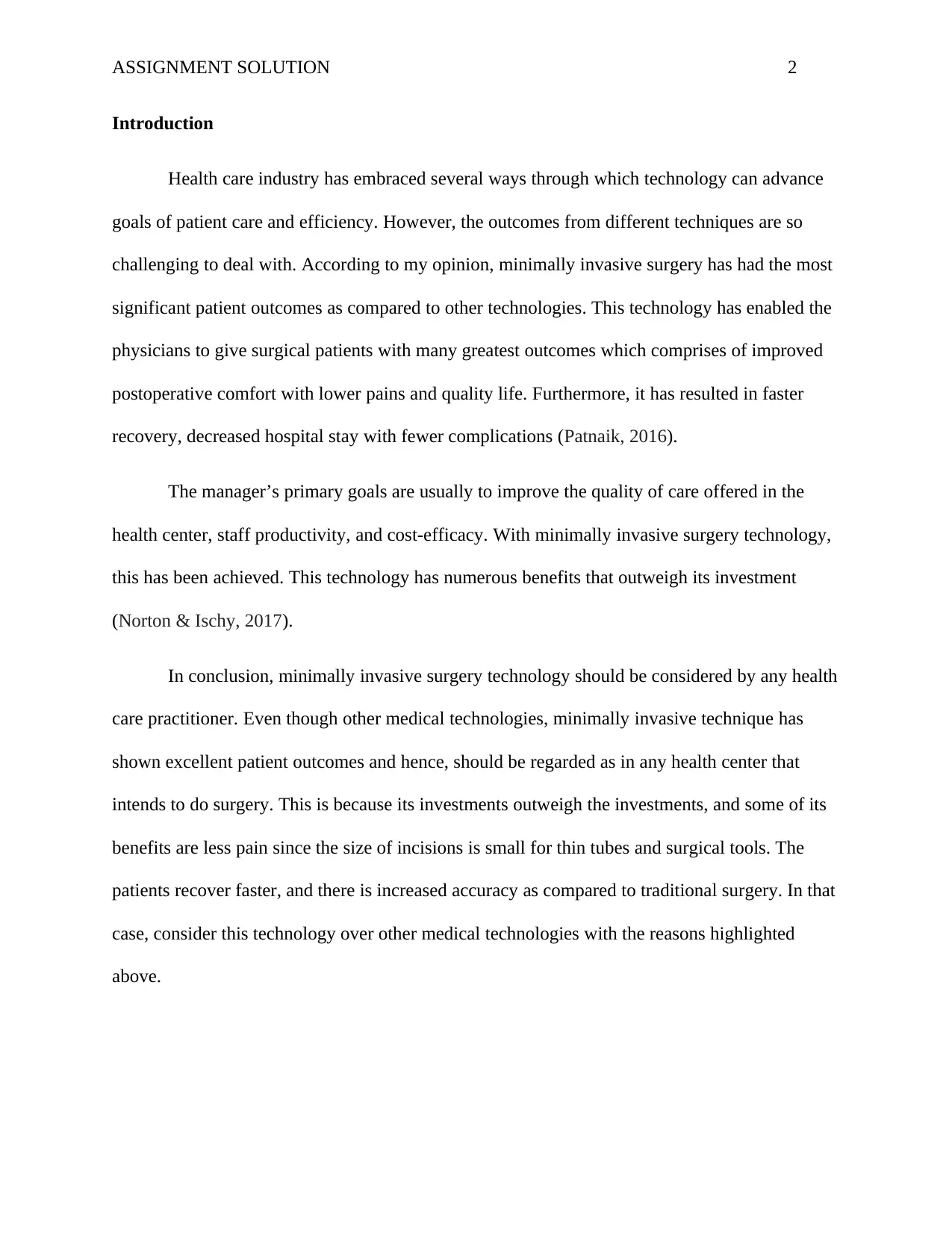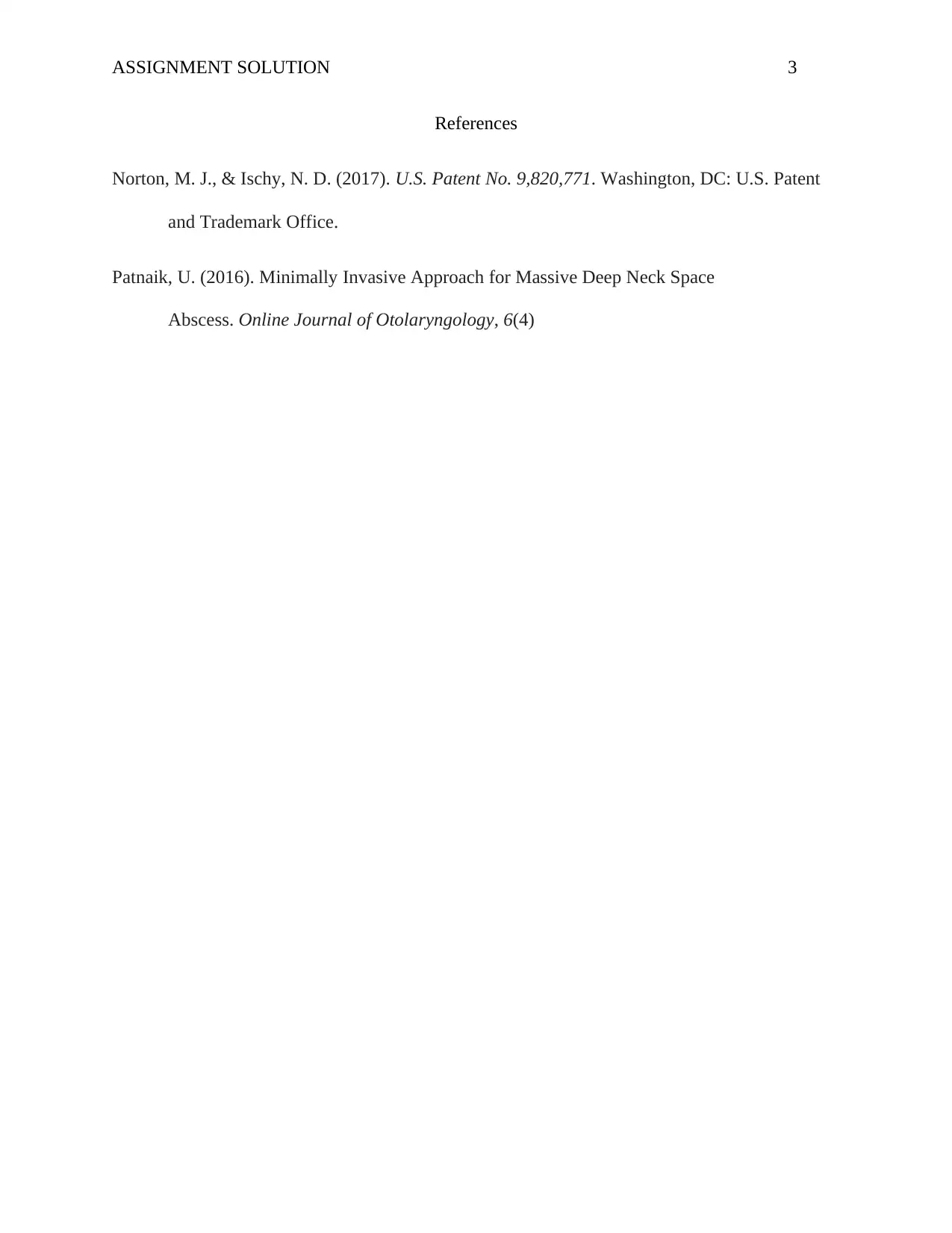Minimally Invasive Surgery: Benefits, Outcomes and Technology
VerifiedAdded on 2022/10/17
|3
|343
|11
Report
AI Summary
This report examines the impact of minimally invasive surgery (MIS) on patient outcomes and its benefits within the healthcare industry. The report highlights the advantages of MIS, including improved postoperative comfort, reduced pain, faster recovery times, and decreased hospital stays, leading to enhanced quality of life for patients. It emphasizes how MIS aligns with healthcare managers' goals of improving care quality, staff productivity, and cost-effectiveness. The report also discusses the technology's investments and advantages, such as smaller incisions, increased surgical accuracy, and reduced complications compared to traditional surgery. In conclusion, this report advocates for the adoption of MIS by healthcare practitioners, citing its superior patient outcomes and cost-effectiveness compared to other medical technologies, supported by references to relevant research and patents.
1 out of 3








![[object Object]](/_next/static/media/star-bottom.7253800d.svg)